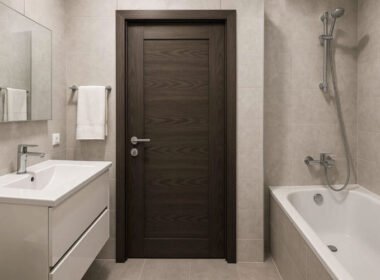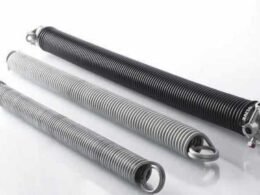Selecting the correct line set size is a crucial step in ensuring your HVAC system operates efficiently and effectively. The line set, which consists of two copper pipes that connect the indoor and outdoor units, carries refrigerant through the system. An incorrectly sized line set can lead to reduced system performance, increased energy consumption, and potential damage over time. Understanding how to determine the appropriate size involves knowing the length of the run, the type of refrigerant used, and the capacity of your HVAC unit. We will explore the essential factors that influence line set sizing and how proper selection contributes to the longevity and functionality of your system.
Key Considerations When Choosing the Right Line Set Size
- Length of the Refrigerant Line Run
The distance between the indoor evaporator coil and the outdoor condenser unit plays a significant role in selecting the correct AC line sets size. Longer runs require larger diameter pipes to maintain proper refrigerant flow and avoid excessive pressure drops. If the line set is too narrow for the distance, the system may experience insufficient cooling or heating due to inadequate refrigerant volume reaching the coil. Additionally, a pipe that is too small can increase energy consumption as the compressor works harder to circulate refrigerant. On the other hand, excessively large pipes may lead to refrigerant migration issues during off-cycles. Therefore, measuring the precise length and consulting the manufacturer’s guidelines is critical to ensure the line set diameter matches the run length.
- Refrigerant Type and System Capacity
Different refrigerants have varying properties, including pressure and flow rates, which affect the sizing of the line set. For example, systems using R-410A refrigerant often require different pipe dimensions than those using R-22 due to differences in pressure levels. Moreover, the capacity of the HVAC system, typically measured in tons or BTUs, also determines the appropriate diameter of the pipes. A higher-capacity system needs larger line sets to accommodate increased refrigerant flow. Using a line set designed for a lower capacity system can restrict refrigerant movement, causing system strain and inefficient operation. Always verify the refrigerant type and system capacity when selecting a line set size to ensure it aligns with the system’s requirements.
- Insulation and Installation Practices
Proper insulation of the line set pipes is essential to prevent energy losses and condensation issues. The choice of insulation thickness and material impacts how effectively the refrigerant retains its temperature as it travels between units. Additionally, installation techniques, such as avoiding sharp bends and securing the pipes correctly, influence the system’s overall performance. While insulation does not directly affect the line set diameter, it complements correct sizing by maintaining efficiency and reducing the risk of refrigerant loss. A well-installed and insulated line set maximizes the system’s ability to maintain the desired indoor temperature with reduced energy consumption.
- Manufacturer Guidelines and Local Codes
HVAC equipment manufacturers provide detailed specifications and recommendations for line set sizing tailored to their units. These guidelines take into account the specific design and operating pressures of the system, ensuring optimal performance and warranty compliance. Local building codes and regulations may also dictate minimum or maximum pipe sizes or installation practices. Adhering to these rules is necessary to avoid legal issues and ensure safety standards are met. Ignoring manufacturer instructions or local codes can lead to system inefficiencies, voided warranties, or costly repairs. Consulting these resources before installation guarantees the right balance between system needs and regulatory requirements.
- Effects of Incorrect Line Set Sizing
Choosing an incorrect line set size can lead to several operational problems within an HVAC system. If the pipes are too small, the refrigerant flow is restricted, causing the compressor to work harder, which can lead to overheating and premature failure. Additionally, inadequate refrigerant volume at the coil reduces heat exchange efficiency, resulting in poor cooling or heating performance. Conversely, pipes that are too large can cause refrigerant to move too slowly, which may lead to oil return issues and refrigerant migration during off cycles. Both scenarios increase energy consumption and reduce the lifespan of the system components. Understanding these effects highlights the importance of accurate line set sizing to maintain system reliability.
- Considering Future System Expansions
When selecting a line set size, it’s prudent to think about potential future upgrades or expansions to your HVAC system. If you anticipate increasing your system’s capacity or adding additional units, installing a slightly larger line set during initial setup can save time and expense later. However, oversizing the line set without a clear plan can cause the issues mentioned earlier, such as refrigerant migration or improper oil return. Balancing present needs with future possibilities requires careful consideration and, if necessary, consultation with experienced professionals who understand system design and performance dynamics.
- Professional Assessment and Measurement
Accurately sizing a line set involves taking detailed measurements and performing calculations, considering factors such as elevation changes, length, refrigerant type, and system capacity. While guidelines exist for DIY enthusiasts, a professional assessment often ensures that all variables are accounted for correctly. Experts can utilize tools and knowledge to assess the specifics of your installation site and HVAC unit, thereby minimizing errors that might otherwise lead to inefficiency or system damage. Seeking this assessment before installation or replacement helps guarantee that the line set size will support optimal performance over the system’s lifespan.
Choosing the right line set size is a fundamental aspect of HVAC system installation and maintenance. It ensures the refrigerant flows properly between units, supports energy-efficient operation, and protects components from premature wear. Taking into account the length of the refrigerant run, system capacity, refrigerant type, insulation, and manufacturer instructions will guide you toward the correct pipe diameter. Furthermore, understanding the consequences of incorrect sizing can help avoid costly repairs and improve overall comfort. By carefully evaluating your specific HVAC setup and considering potential future needs, you can select a line set that contributes to a reliable and efficient climate control system.










